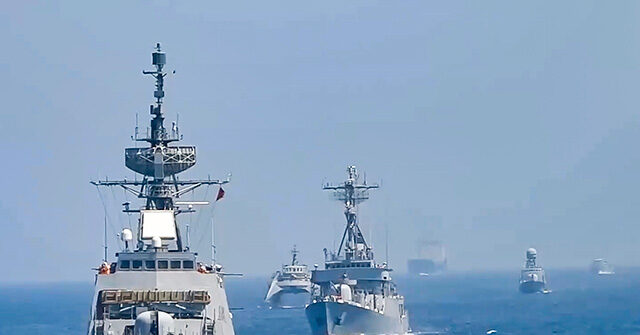This week, Iranian state media announced that Saudi Arabia is interested in conducting joint naval exercises in the Red Sea, a statement that was immediately met with skepticism from the Saudi Defense Ministry, which asserted that no such plans are currently in place. Admiral Shahram Irani, the commander of the Iranian navy, expressed optimism about the potential for coordination between the countries and mentioned upcoming consultations between delegations from both nations. However, details on the nature and timing of any joint exercises were not provided, highlighting a lack of concrete progress in this area. The Saudi Defense Ministry’s response suggests a careful approach to relations with Iran, emphasizing the absence of planned exercises rather than affirming collaboration.
Interestingly, Saudi Arabia did participate as an observer in a recent naval exercise titled “IMEX 2024,” conducted in the northern Indian Ocean by Russia, Oman, and Iran. Other countries, including India, Thailand, Pakistan, Qatar, and Bangladesh, also had observers at these drills, which were promoted by Iranian media as a means to enhance collective security in the region. However, the portrayal of such exercises was tinged with skepticism, particularly considering the geopolitical context: both Iran and Russia have been involved in activities that threaten maritime security in their respective regions.
Brigadier General Turki al-Maliki, the Saudi Defense Ministry spokesman, pointed out that Saudi Arabia had recently completed a joint naval exercise alongside Iranian naval forces in the Sea of Oman, although it remains unclear how involved Saudi ships were in the IMEX 2024 drill. His remarks about the lack of ongoing military exercises further undermine the assertions made by Iran regarding future joint naval endeavors. This ambiguity reflects the complicated and often contradictory nature of military relations between Iran and Saudi Arabia, where past grievances inhibit transparent communication.
In spite of the ambiguity regarding joint exercises, the Chinese state-run outlet Global Times reported on the purported imminent collaboration between the Saudi and Iranian navies as a sign of their growing rapprochement, which was facilitated by Chinese mediation last year. The narrative surrounding this potential cooperation is couched in the broader context of China’s rising influence in global diplomacy, particularly in conflicts involving its Middle Eastern trade partners. The alignment of Iran and Saudi Arabia’s interests could signal significant shifts in regional dynamics, especially in how nations choose to engage with overlapping security concerns.
Experts referenced by the Global Times suggest that these developments could indicate a waning confidence in the United States among Middle Eastern nations, interpreting any planned naval exercises as a shift toward regional cooperation rather than a direct challenge to American influence. Importantly, these analyses downplay potential implications for U.S. interests, asserting that the exercises could serve to enhance security management in the volatile Red Sea region. However, this perspective is complicated by ongoing Iranian-sponsored attacks on U.S. and European vessels in the region, exposing the complexities inherent in regional alliances and rivalries.
In summary, while the dialogue surrounding Saudi-Iranian naval exercises has generated interest and speculation, concrete steps toward collaboration remain uncertain. The differing narratives from Iranian and Saudi sources, alongside observations from international media and analysts, underscore the intricate interplay of military, diplomatic, and regional factors at stake. As both nations navigate their path forward, the context of their historical rivalries, shifting alliances, and the influence of external powers like China can only complicate a transparent and cooperative dialogue about maritime security and mutual interests in the Red Sea.

